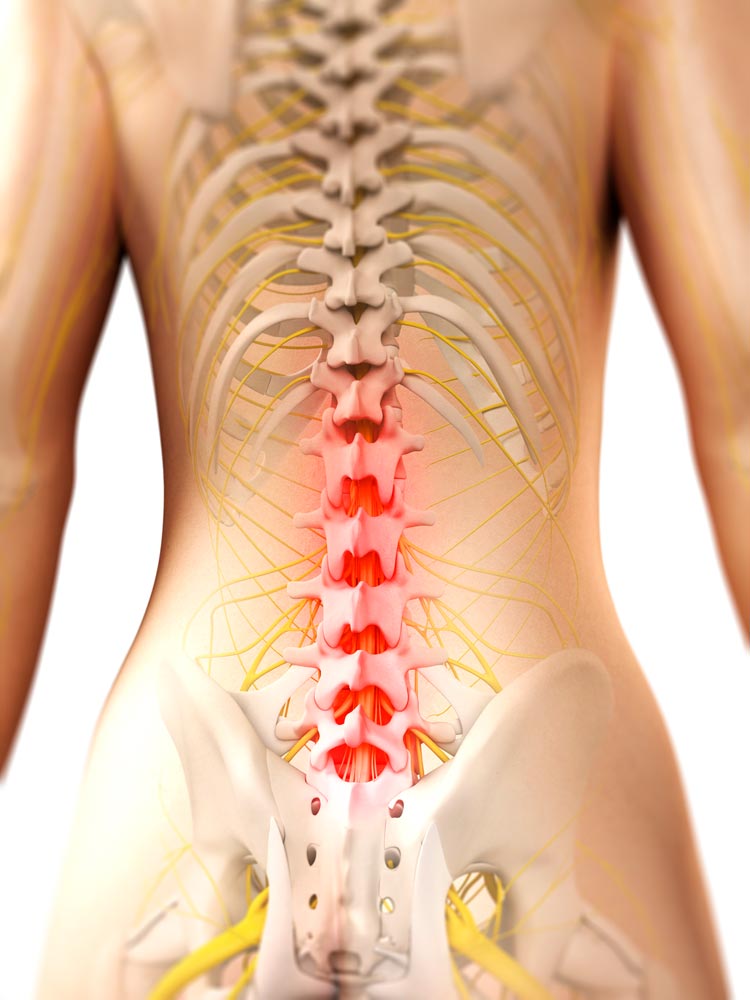 What are kyphoplasty and vertebroplasty procedures?
What are kyphoplasty and vertebroplasty procedures?
Kyphoplasty and vertebroplasty are minimally invasive procedures used to treat vertebral compression fractures, often caused by osteoporosis or trauma.
During kyphoplasty, a small balloon is inserted into the fractured vertebra and inflated to create a cavity. Bone cement (a synthetic material made of polymethyl methacrylate) is then injected into the cavity to stabilize the fracture and restore vertebral height, reducing pain and improving spinal alignment.
Vertebroplasty involves injecting bone cement directly into the fractured vertebra without using a balloon, providing immediate stabilization and pain relief.
Both procedures aim to relieve pain, restore vertebral height and enhance spinal stability, allowing patients to regain function and mobility. They are performed under local anesthesia and fluoroscopic imaging guidance, resulting in minimal downtime and faster recovery compared to traditional open surgery.
What steps are involved with a kyphoplasty or a vertebroplasty surgery?
During a kyphoplasty or a vertebroplasty surgery, you can expect the following:
- Preparation: Before the procedure, you’ll be positioned to lie face down or on your side on the operating table. Local anesthesia is administered to numb the skin and tissues at the surgical site. In some cases, sedation or general anesthesia may be used.
- Guided imaging: Using fluoroscopy or X-ray guidance, your surgeon locates the fractured vertebra and identifies the optimal entry point for needle placement.
- Needle insertion: A small incision is made in the skin, and a hollow needle is inserted through the skin and into the fractured vertebra under fluoroscopic guidance.
- Balloon insertion (kyphoplasty): For kyphoplasty, a deflated balloon is threaded through the needle into the fractured vertebra. Once in position, the balloon is gently inflated to create a cavity within the vertebral body.
- Bone cement injection: Once the desired cavity is created, the balloon is deflated and removed, and bone cement is injected into the cavity to stabilize the fracture and restore vertebral height.
- Closure: After the cement is injected and sets, the needle is removed and the incision site is typically closed with a small bandage or adhesive strips.
How long is the recovery time?
Following kyphoplasty or vertebroplasty, you can expect a relatively short recovery time compared to traditional open surgeries. Most people are able to return home the same day, but individual recovery may vary. In general:
- Immediately post-surgery: You may experience some discomfort or soreness at the incision site, which can typically be managed with over-the-counter pain medications. It’s important to follow your surgeon’s instructions regarding activity restrictions, wound care and medication usage.
- Early recovery: In the days following surgery, you should gradually increase your activity as you’re able. Walking and light activities are usually recommended to promote circulation and prevent blood clots.
- Long-term recovery: You should experience significant pain relief and improved mobility within a few days to weeks after surgery. Physical therapy may help strengthen the muscles supporting the spine and improve range of motion. Full recovery may take several weeks to months, depending on your overall health and the extent of the procedure.
You should always communicate any concerns or changes in symptoms to our team to ensure optimal recovery and long-term outcomes.
What are the risks of kyphoplasty and vertebroplasty?
While kyphoplasty and vertebroplasty are generally safe procedures, there are some risks and potential complications, including:
- Infection: There is a risk of infection at the incision site, although this is rare with minimally invasive procedures.
- Bleeding: Some bleeding may occur at the needle insertion site or within the vertebral body.
- Nerve injury: There is a small risk of injury to nearby nerves during the procedure, which could cause pain, numbness or weakness.
- Allergic reaction: Some patients can have an allergic reaction to the bone cement used during the procedure, although this is uncommon.
- Cement leakage: In rare cases, the bone cement used in kyphoplasty or vertebroplasty may leak out of the vertebral body and into surrounding tissues, which could potentially compress nearby nerves or blood vessels.
- Fracture: There is a small risk of adjacent vertebral fractures occurring as a result of increased pressure on neighboring vertebrae after the procedure.
While these risks are generally low, our health care team will discuss these with you and be ready to answer any questions you may have.
Spinal Stenosis
How would you like to schedule?
Don’t have MyChart? Create an account
